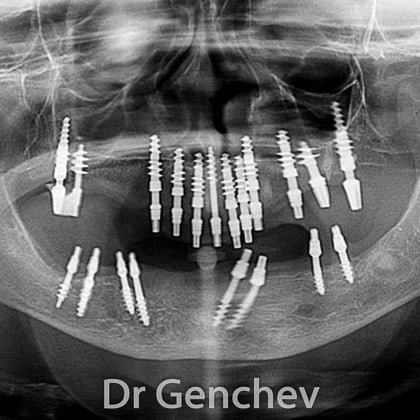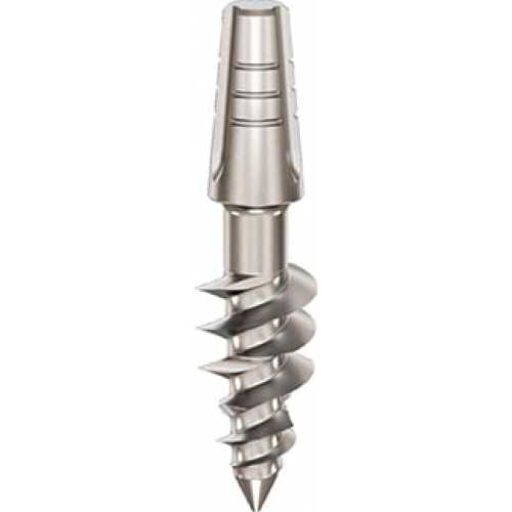Basal implantology for full mouth dental restoration
Basal implantology treats patients that suffer from partial or total tooth loss with severe bone loss. This technique is more advanced than conventional implantology because it avoids bone grafting and sinus lift.
Basal implantology has two important components: the basal dental implants and the fixed full dental prosthesis.

What is basal implantology?
How is basal implantology different from conventional implantology?
Basal implantology is a branch of dentistry and dental implantology. It specializes in full mouth dental restoration of edentulous, toothless, patients with severe bone atrophy, bone loss and those who suffer from gum disease.
Basal implant dentists use basal dental implants that are especially made to be fixed into the cortical bone of the jaw to avoid bone graft, bone compensation and sinus lift that are not good solutions for edentulism with severe bone atrophy. Basal implantology offers an effective long-term solution to patients that are considered hopeless cases by conventional implantology.
Firstly, basal dental implants are longer in order to be fixed into the cortical bone. It is hard bone not subject to resorption like the spongious bone of the gums where conventional implants are placed.
Secondly, in basal implantology, the implantologist places full bridges of 14 crowns that stabilizes all the dental implants together under the prosthesis. This allows the bone to close around the tooth implant more quickly. As a result, the basal dental implants are more stable and solid. They absorb the pressure of chewing.
Basal implantology recreates the natural functionality of the mouth. Patients can once again chew normally with the molars at the back of the jaws, which is not the case with conventional implantology using the All-on-4 or All-on-6 system. Basal implantology is practiced with basal dental implants in the dental restoration system All on 4 Xtra.
Basal implantology protocol
What is the basal implantology protocol?
There is not one single protocol for basal implantology. There are several schools of basal implantology and each has its own protocol. The different protocols can be categorised by country and by the dental implant manufacturer.
But as more dentists worldwide practice basal implantology the techniques have diversified to adapt to the needs of patients. Basal implantology tends to attract patients who are condemned by conventional implantology. Patients that suffer from severe periodontal disease, partial or total edentulism with severe bone atrophy find an effective solution with basal dental implants.
In fact, each basal implantologist applies the protocol depending on the patient he is treating. All patients are different and each patient should be treated individually. Applying one single protocol to all patients worldwide does not make sense and would lead to failure. So each basal implant dentist adopts a practical approach to the strategic implantation. For example, Dr Genchev has made 7 key improvements to the protocol of basal implantology to resolve important issues and deliver better results.
Basal implantology requires additional qualifications and experience to conventional implantology. Dentists who use basal dental implants have first practiced conventional implantology with restorative systems such as All on 4 and All on 6 for many years before switching to basal implantology.
Today there are many protocols for basal implantology. As more and more dentists worldwide adopt basal implantology and share its benefits the technique improves. Each implantologist has his own technique for full mouth dental restoration and uses his preferred type of implants. Because each patient has different problems, the dentist adapts the protocol and technique to successfully restore the patient’s teeth.
